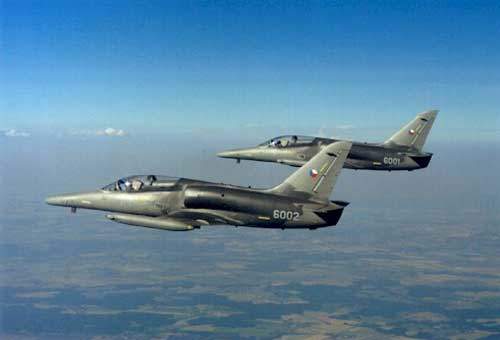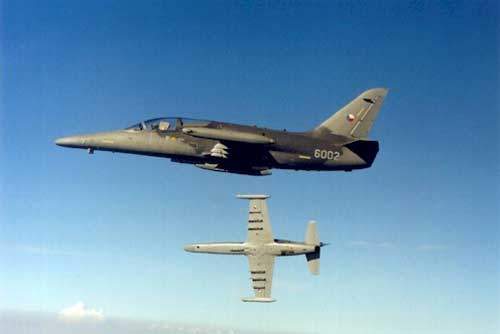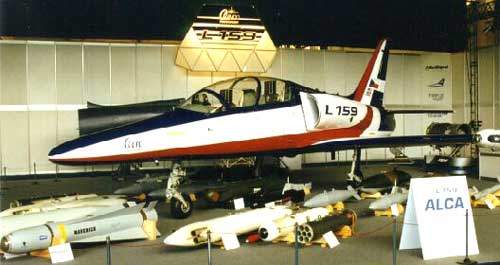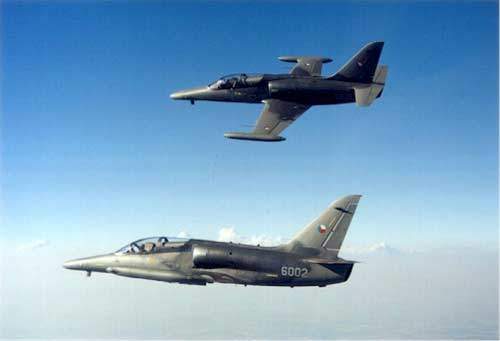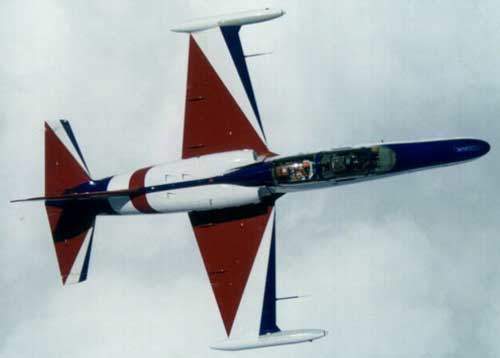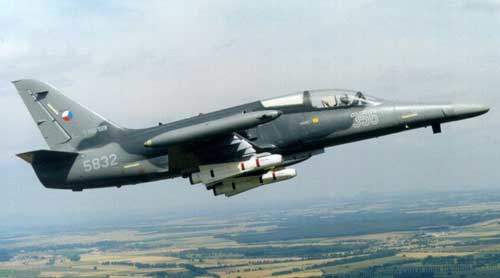The L159 Advanced Light Combat Aircraft (ALCA) was developed by Aero Vodochody to meet the Czech Air Force operational requirements for a light multi-role combat aircraft. The aircraft was developed in the single-seat L159A and two-seat L159B versions.
The Czech Air Force ordered 72 L159A aircraft and the first was delivered in April 2000. All 72 were delivered by the end of 2003. The L159B completed its first flight in June 2002 and the Czech Air Force ordered a further two aircraft.
Aero Vodochody was owned 50% by the Czech Government and 35% by Boeing Company; however, in October 2004, Boeing withdrew from the company. On 23 November 2005, the Czech Government announced that the company was to be privatised and, in October 2006, it was sold to Penta Investments.
In July 2004, the Czech Ministry of Defence announced that it plans to reduce the number of L159 aircraft in service by 47 to 18 in operational service and six in reserve. The remainder of its L159 fleet is to be sold.
L-159 aircraft modernisation programme
In June 2006, Aero Vodochody was awarded a contract by the Czech Ministry of Defence to convert four single-seat L-159A aircraft to L-159B two-seaters. The first modified aircraft made its maiden flight on 8 March 2007, while the second aircraft completed its maiden flight on 6 August 2007. The third aircraft took its maiden flight on 28 August 2007. All four converted aircraft were delivered to the Czech Air Force in November 2007.
In May 2008, Aero Vodochody signed an agreement with Saab Czech and Gripen International to cooperate on the marketing and further development of the L-159.
L159 Advanced Light Combat Aircraft features
The L159 ALCA is based on the proven airframe design and aerodynamic configuration of the L39 Albatros and L59 family of basic and advanced jet trainers, and incorporates a high-performance military turbofan engine, advanced avionics and sensors.
The operational capabilities of the aircraft include close air support, tactical reconnaissance, air defence, counter insurgency, border patrol, anti-ship missions, and lead-in fighter and weapons training.
The L159 ALCA is based on the proven airframe design and aerodynamic configuration of the L39 Albatros and L59 family of basic and advanced jet trainers. It incorporates a high-performance military turbofan engine, advanced avionics and sensors. The operational capabilities of the aircraft include close air support, tactical reconnaissance, air defence, counter insurgency, border patrol, anti-ship missions, and lead-in fighter and weapons training.
L159 ALCA cockpit
The cockpit arrangement and controls of the L159 ALCA correspond to a modern fighter aircraft configuration. The flight visions head-up display (HUD) with raster capability is the primary flight instrument and weapon aiming system. The multifunction colour displays are used for the display of flight and navigation information and weapons systems status. The hands-on throttle and stick (HOTAS) control enables both pilots to control the aircraft without removing their hands from the throttle or the control stick.
The cockpit is protected with composite and ceramic ballistic armour. Survivability is also increased by the provision of a fuel tank inerting system, an on-board inert gas-generating system (OBIGGS). VS-2 zero ejection seats and a canopy jettisoning system are fitted. The standard aircraft configuration also includes an on-board oxygen-generating system (OBOGS).
Weapons
The aircraft is equipped with a Hamilton Standards Stores Management System. There are seven hardpoints to carry stores: three under each wing and one under the centre fuselage.
These are capable of carrying a wide range of NATO standard weapons, including AIM-9 Sidewinder air-to-air missiles, AGM-65 Maverick air-to ground missiles, rockets and free-fall bombs, a gun pod, laser-guided bombs, reconnaissance pods, electronic countermeasure pods and fuel drop tanks.
The system is adaptable for the addition of new weapons, including medium-range air-to-air missiles and special pods for ECM, reconnaissance, night navigation and targeting.
Countermeasures
The L159 ALCA’s electronic warfare system consists of the BAE Systems Sky Guardian 200 radar warning receiver and the Vinten Vicon 78 series 455 countermeasures dispensing system. Provision is made for the installation of an electronic countermeasures (jamming) pod.
Avionics
The L159’s avionics system meets multi-mission requirements and provides capabilities similar to current-generation frontline fighter and ground attack aircraft. Avionics integration is via a MIL-STD-1553 databus, which facilitates future growth.
The avionics system performs the following functions: target sensing, controls and displays, stores management, communication, navigation and identification, self-protection, and data loading and recording.
The L159A aircraft is equipped with a Grifo-L multimode pulse Doppler radar produced by the Italian company FIAR. For air-to-air search the radar has five modes of operation, can track up to eight targets and has track-while-scan capability. There are four submodes for air combat and nine modes for air-to-surface operations. The L159B is fitted with an electro-optical sensor or laser designator in the nose.
The aircraft’s autopilot and yaw damper, supplied by BAE Systems Flight Controls, has a stall avoidance system mode (SAS), automatic attitude hold (ATT HLD), heading hold (HDG HLD), altitude hold (ALT HLD) and control stick steering mode (CSS).
The aircraft monitoring system (AMOS) collects, processes and records data about the aircraft systems and aircraft loading, and provides automatic data retrieval and data transfer, via a Fairchild data transfer system, to the aircraft maintenance management system.
Honeywell ITEC F 124-GA-100 engine
The aircraft is equipped with a Honeywell ITEC F 124-GA-100 engine developing a maximum thrust of 28kN. The F124 is a two-shaft non-afterburning turbofan engine with three-stage LP axial compressor. The HP compressor has four axial stages followed by one centrifugal.
An engine monitoring system (EMS) is embedded in the dual Full Authority Digital Engine Control (FADEC) to store mechanical and performance data during flight, and has the capability to provide analytical and condition check-out on the ground.
Aero Vodochody is flight testing L-159 aircraft equipped with an in-flight refuelling probe.
Performance of the L159 ALCA
The L159 can climb at the rate of 47m per second. Its maximum speed is 936km per hour. The range and service ceiling of the aircraft are 2,530km and 13,200m, respectively. Its take-off run is 440m.
The aircraft weighs around 4,350kg and its maximum take-off weight is 8,000kg.

